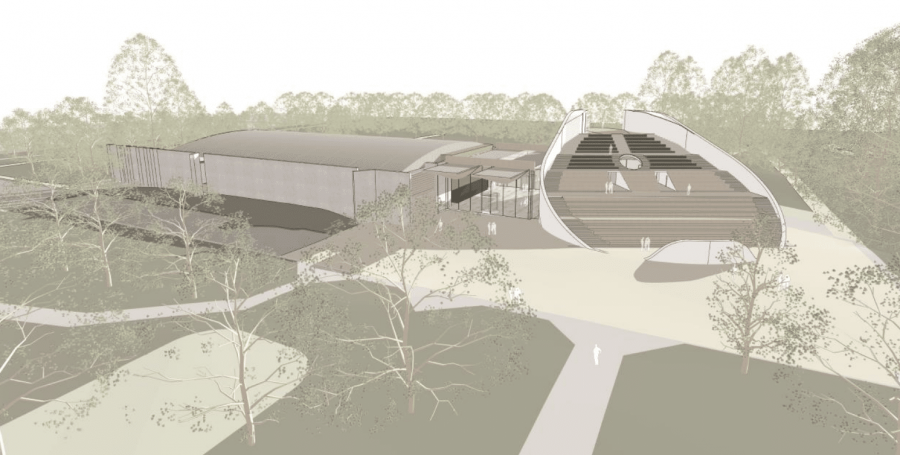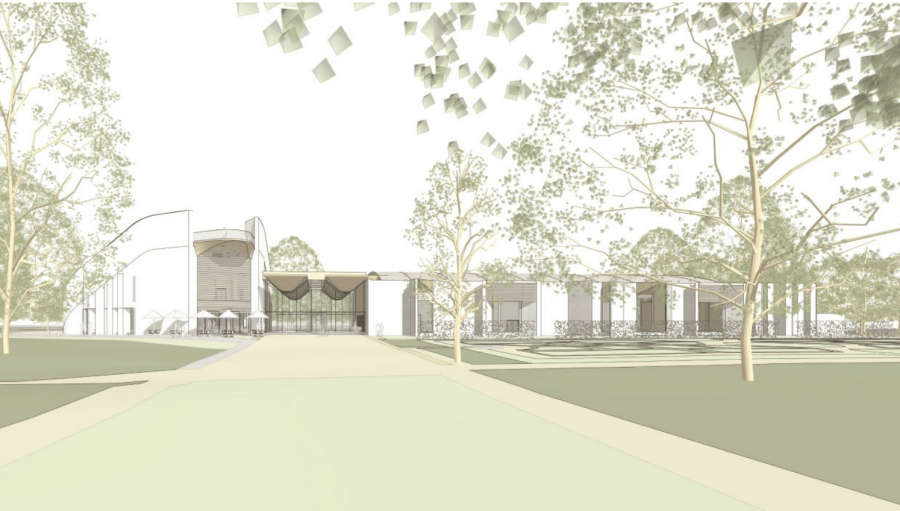
The initial conceptual plans for Invercargill’s new Southland Museum have been unveiled, showcasing a groundbreaking design that promises to redefine the city’s cultural landscape. Australian architects fjcstudio, in collaboration with Auckland-based firms Evatt Martin Architects and design Tribe, were handpicked for the prestigious task of designing the new museum as a crucial component of the Invercargill City Council’s Project 1225.
Related:
- Councillors All Onboard With Naming Of New Southland Museum
- Invercargill City Council Unveils Concept Designs for Tuatara Home in Queens Park
- Architects Appointed To Design New Queens Park Tuatara Facility
- Invercargill Museum Receives Major Funding Boost From Community Trust South
- Invercargill Museum Receives $500,000 Boost from ILT, Total Funding Reaches $1 Million
The visionary Project 1225 encompasses not only the museum but also includes provisions for a state-of-the-art museum collection storage facility and a dedicated tuatara conservation center within the picturesque Queens Park. The eagerly anticipated design drafts, publicly disclosed on Thursday, offer a tantalizing glimpse into the immersive museum experience, complete with a café, retail spaces, and educational zones.
The ultimate green light for the project rests with the Council, which will deliberate over the concept designs for their final seal of approval. Additionally, the Council is poised to make a decision on whether the new institution shall bear the name “Te Unua Museum of Southland” or “Te Unua Southland Museum.” A momentous verdict is anticipated during the upcoming full Council meeting scheduled for August 22.
Erin Moogan, Group Manager Infrastructure at Invercargill City Council, marveled at the distinctive architectural vision brought to life in the designs. She expressed her enthusiasm, stating, “They have exceeded all expectations, delivering a building that possesses the ‘wow’ factor we envisioned for the new museum. This is an extraordinary chance to shape a generation-defining landmark, and they have undeniably hit the mark.”

Both the Council and the architects alike acknowledged the profound impact of an iconic building on the local community, and this sentiment resonates throughout the designs. The architects meticulously immersed themselves in the region’s history and environment, which is beautifully reflected in the new building’s design philosophy, according to Moogan.
The design narrative is underscored by a cultural compass that ingeniously integrates Southland’s natural elements. The design seamlessly merges urban, park, and waterway components, paying homage to the region’s interconnected landscapes. The building’s orientation towards the Takitimu mountain ranges and its incorporation of glass features effectively establish a visual link to the park and CBD.
Moogan emphasized the need for fluid connectivity between the building and its surroundings, highlighting that “The current building is very closed off from the park and lacked a connection. With play and event areas included in the design, it will ensure a free flow from building to natural spaces.”
The crown jewel of the architectural marvel is an amphitheater, ingeniously conceived to double as a daytime viewing spot for Southland landmarks and an enchanting venue for events such as markets and moonlight cinemas. The amphitheater’s design concept, aptly named “Tāwhaki Ascension” or “Pursuit of Higher Knowledge,” symbolizes a nod to elevation and enlightenment.
A central design element is the double-hulled waka, or “te unua,” which serves as a connecting bridge between the building’s south and north entrances. This waka encapsulates various dualities – from “mana whenua” and “tauiwi” to “arts and museum,” and “coast and urban.”
Within the interior, the museum boasts abundant exhibition spaces, alongside retail and café areas, staff zones, and a strong emphasis on interactive engagement. Annie Hensley, Principal Head of fjcstudio, expressed her delight in contributing to the conceptualization of the new museum. She shared, “Our journey thus far has been remarkably inspiring, as we’ve delved into the rich tapestry of culture, landscape, and history woven into this region.”
Hensley further explained, “We’re privileged to have the opportunity to celebrate significant narratives within the building’s design, delving into the cultural landscapes of Murihiku, Rakiura, Ruapuke, Motu Maha, and Motu Ihupuku.”
The concept’s foundation is rooted in Invercargill’s place within a broader regional context, encompassing its relationship with the northern Takitimu Ranges, the southern islands, the Southern Lights, and Ngā Kurakura Hinenuitepō, an integral aspect of Maori mythology.
Moogan stressed the project’s forward-looking nature, asserting, “The architects have delivered outcomes that surpassed our imagination. This is the essence of exceptional design – revealing possibilities we hadn’t considered before. We’re thrilled to share these designs with the community, confident that they will elevate Invercargill to new heights.”
Already privy to a preliminary rendition of the designs, Council members were resoundingly impressed and are eagerly awaiting community feedback. As the Council convenes on August 22, they are poised to endorse the design, confirm Project 1225’s budget, and deliberate on the museum’s official name, signifying a monumental leap towards Invercargill’s cultural future.
Headlines:

